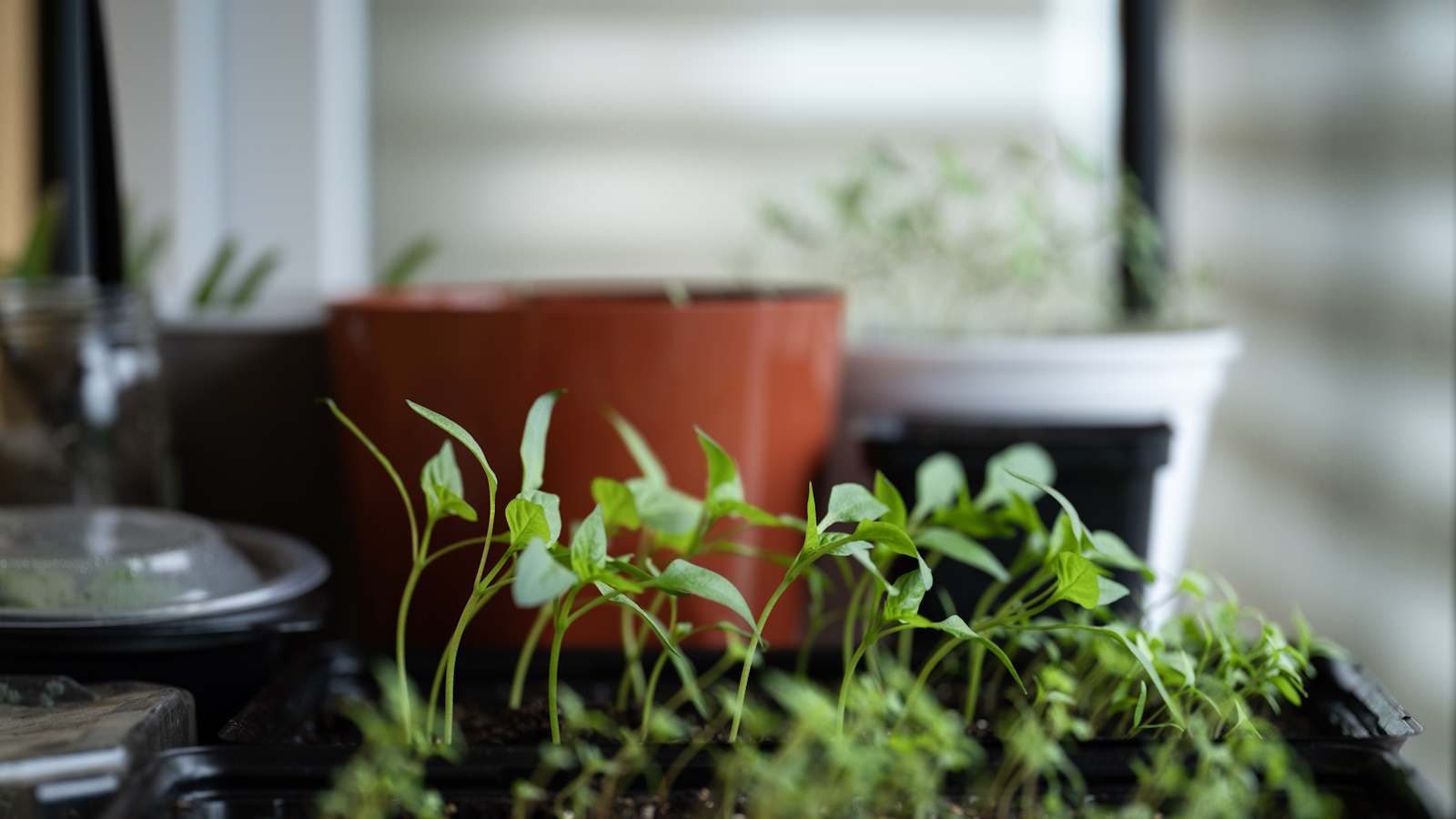
If you live in an apartment or flat without any outside space, growing your own vegetables indoors may seem like nothing more than a pipe dream. But it is entirely possible - provided you choose the right crops and have a few pieces of handy kit to help them flourish.
Veg growing can form a huge part of your indoor gardening ideas, and being able to cook with the crops you've grown is so rewarding. When considering indoor vegetable growing, look for cool season plants that tolerate some shade, like leafy greens. While most vegetables need heat and full sun to produce crops, some are less demanding, and therefore will be a lot easier to start with.
The technology around indoor growing has advanced hugely in recent years. You might want to opt for a full hydroponic growing system, such as this from Amazon, or prefer to use more basic kit. Either way, it is entirely possible. If you feel like giving it a go, we have spoken to growing experts to find out the best vegetables you can grow indoors, and what conditions they need to thrive.
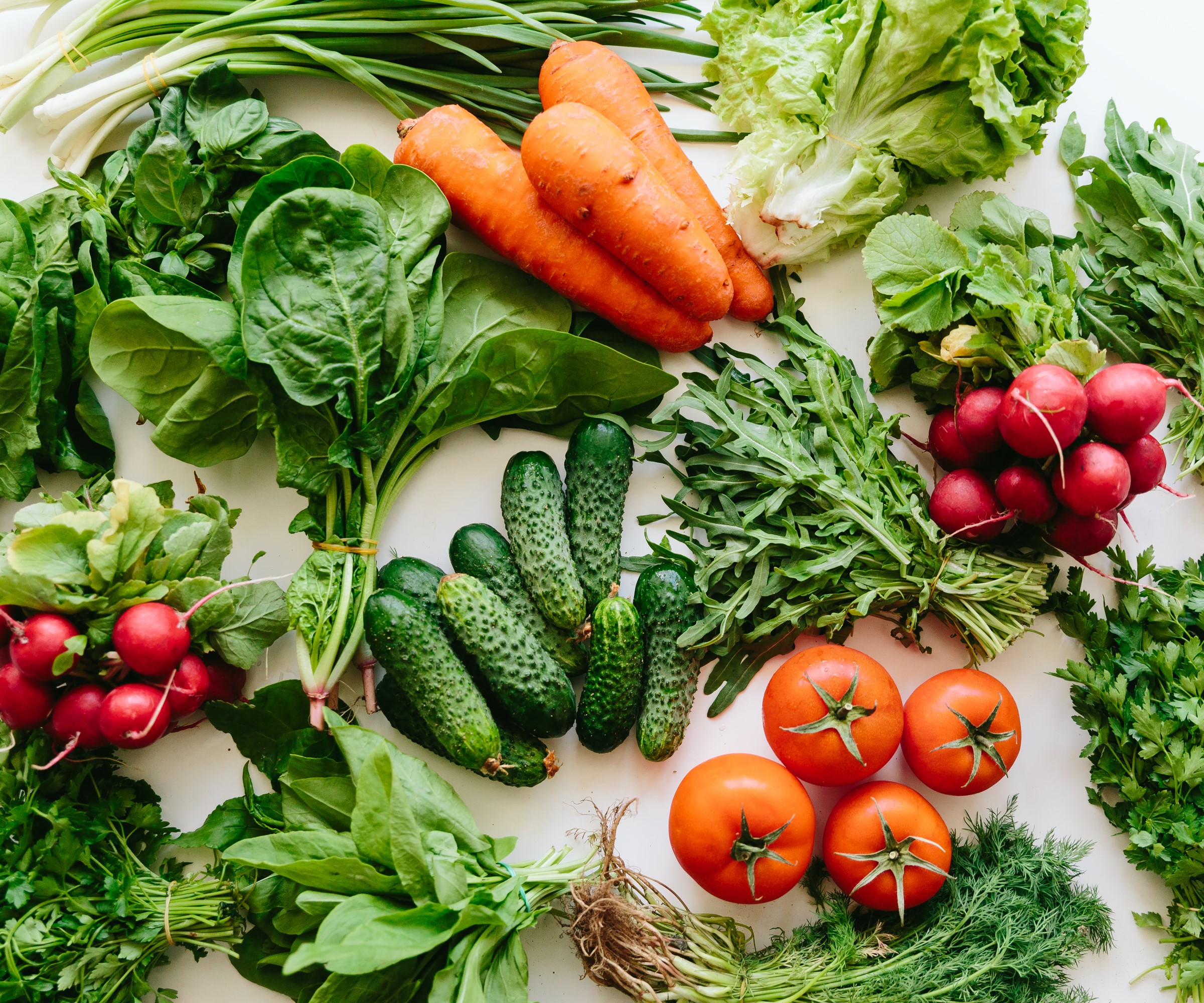
Tips for taking care of an indoor veg garden
Here are some general care tips from pro gardener Matthew Wilson, that can be applied to all the crops in this list when grown indoors.
Check crops regularly:
You should always inspect your plants either for signs of pests or other diseases. This will help to prevent the infected plant or leaves spread the infestation further to other parts of your indoor garden.
Provide good air circulation:
The proper draining of soil and aeration of plant discourages the development of mold and mildew. If you are noticing a circulation problem, place a small fan near your plants as this will help improve airflow.
Ensure even growth through rotation:
When providing your growing veg sunlight, make sure you rotate them every 2-3 days to ensure all sides of the plant is exposed to the light. This helps them to grow uniformly and not only on one side.
1. Spinach
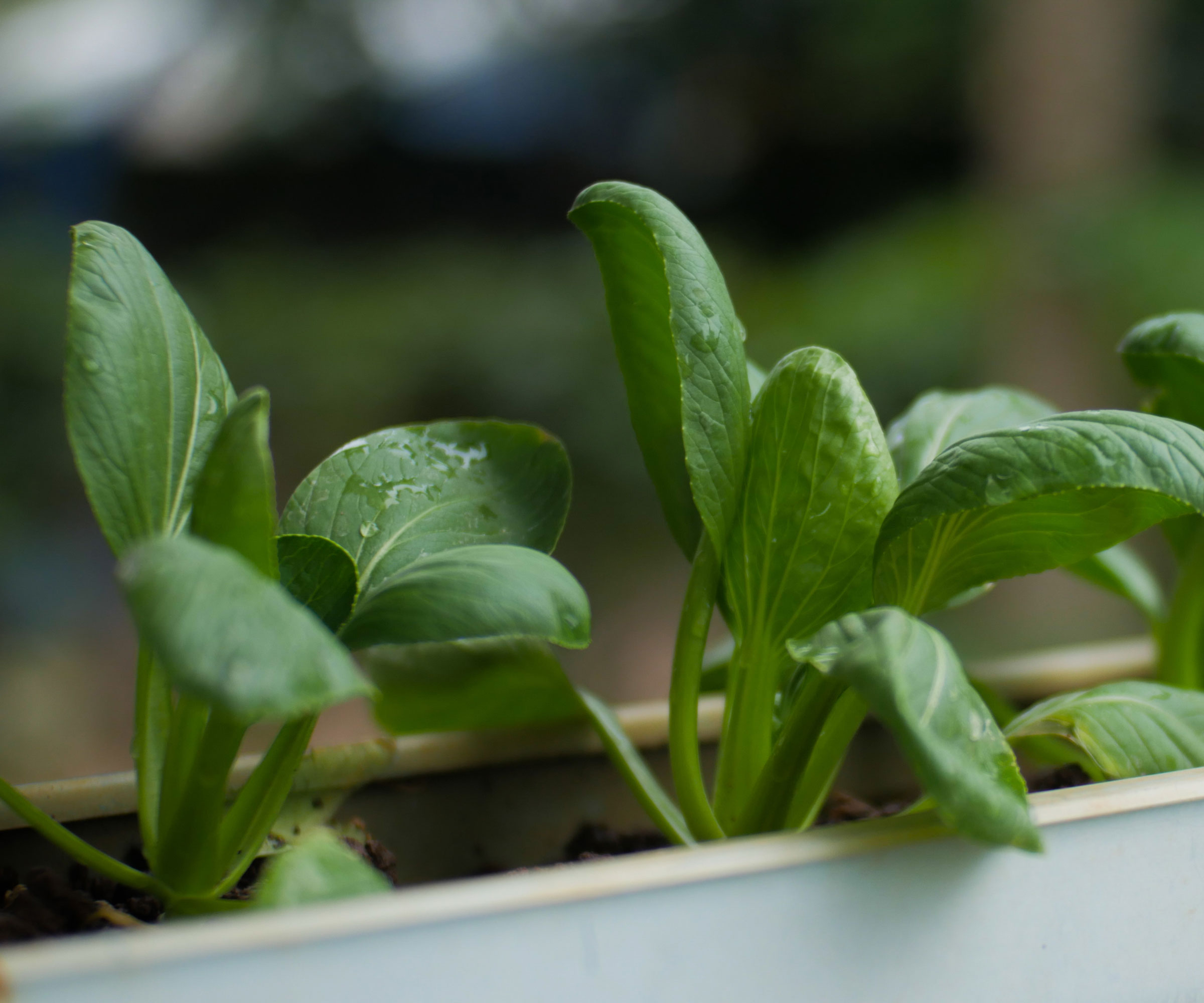
According to Anna Hackman of The Naked Botanical, 'Bloomsdale' and 'Baby’s Leaf' are two types of baby spinach that grow well indoors.
Anna suggests to start by gathering small containers, preferably ones that have drainage holes such as these ceramic planter pots from Amazon and add a generous amount of organic potting mix such as Espoma organic potting soil mix from Amazon.
Disperse your spinach seeds on top of the potting mix and just cover them slightly with soil.
Light conditions: Growing spinach requires around 12 hours of light. Put the containers near any window that has direct sunlight or alternatively, use an artificial light source.
Watering: The soil should be moist all the time but should not be waterlogged. After the topsoil has dried, top up the plant and soil with water.
Harvesting: Allow the leaves to be 3-4 inches long, then harvest the spinach by trimming from the outer part and let the inside leaves continue to grow.
2. Radishes
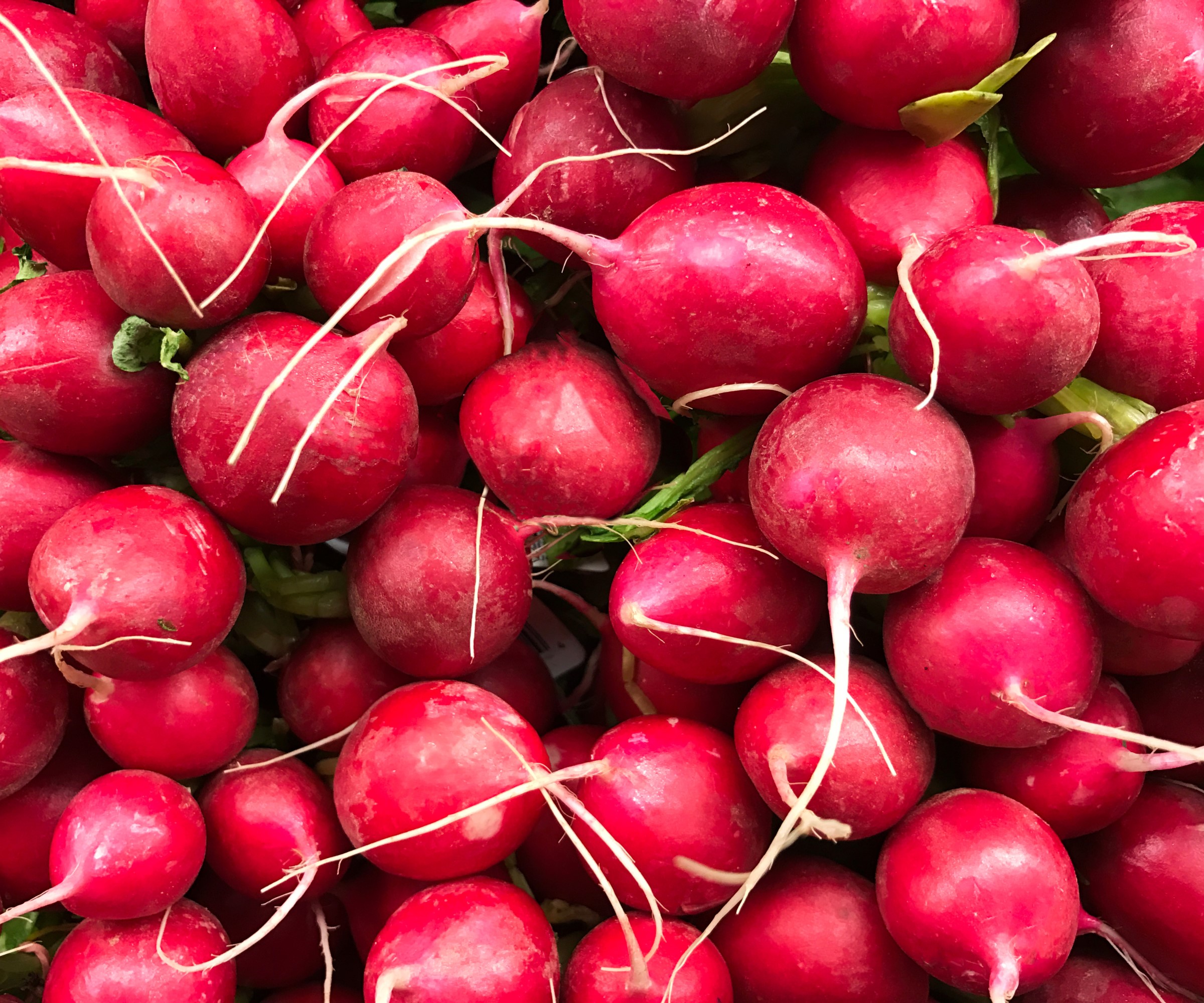
Radishes are another crop that can be grown indoors, and although they are generally grown for their roots, you can also harvest and eat the tops too.
Look for petite, round varieties rather than elongated options, since they can grow in just a few inches of soil. Perhaps the best thing about growing radishes is that in the right growing conditions, they grow from seed to being ready to be picked in less than a month.
First, select fast maturing radish varieties that include ‘Cherry Belle’ or 'French Breakfast’.
Make sure the containers are at least 6 inches deep. Transplant seeds into a loose potting mix - the seeds should be planted at a depth of 1/2 inch and spaced 1 inch apart in rows.
Light conditions: Ensure the radish plants receive 6-8 hours of direct sunlight or if this is impossible, use an artificial grow light.
Watering: The soil should be kept moist but not waterlogged. Radishes do well when planted in slightly moistened soil.
Harvesting: To get the best flavor, you should harvest radishes once the root has properly developed and is about one inch thick.
3. Lettuce
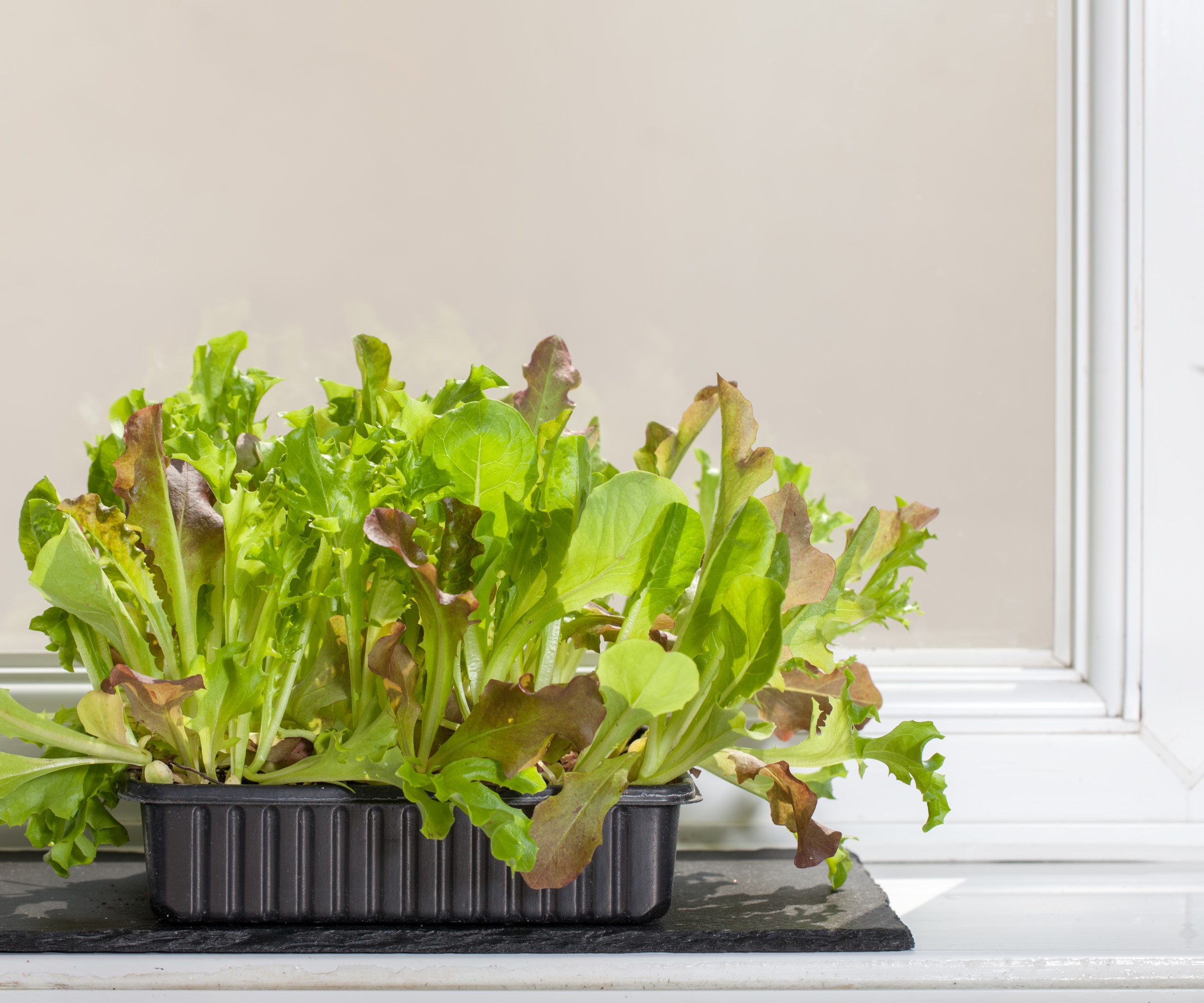
Leaf lettuce grows best when the temperatures are around 70°F, which works great for indoor growing as that is a comfortable temperature for most households.
Lettuce also has a shallow root system, making it a good option if you have limited space. Sow seeds on the surface of the soil and cover them lightly with top soil. They usually take between one and two weeks to germinate, and some varieties only take 30 days until they will be ready to harvest. Harvest the outer leaves as the plants grow for a continuous supply of lettuce.
Light requirements: Lettuce needs about 10-12 hours of light daily. Put your growing lettuce plants by the window where they can be exposed to the sunlight.
Watering: You should water your growing lettuce plants when the soil appears dry to the touch, to maintain moist soil all the time.
Harvesting: As lettuce plants grow, trim the outer leaves to make way for new ones.
4. Green Onions
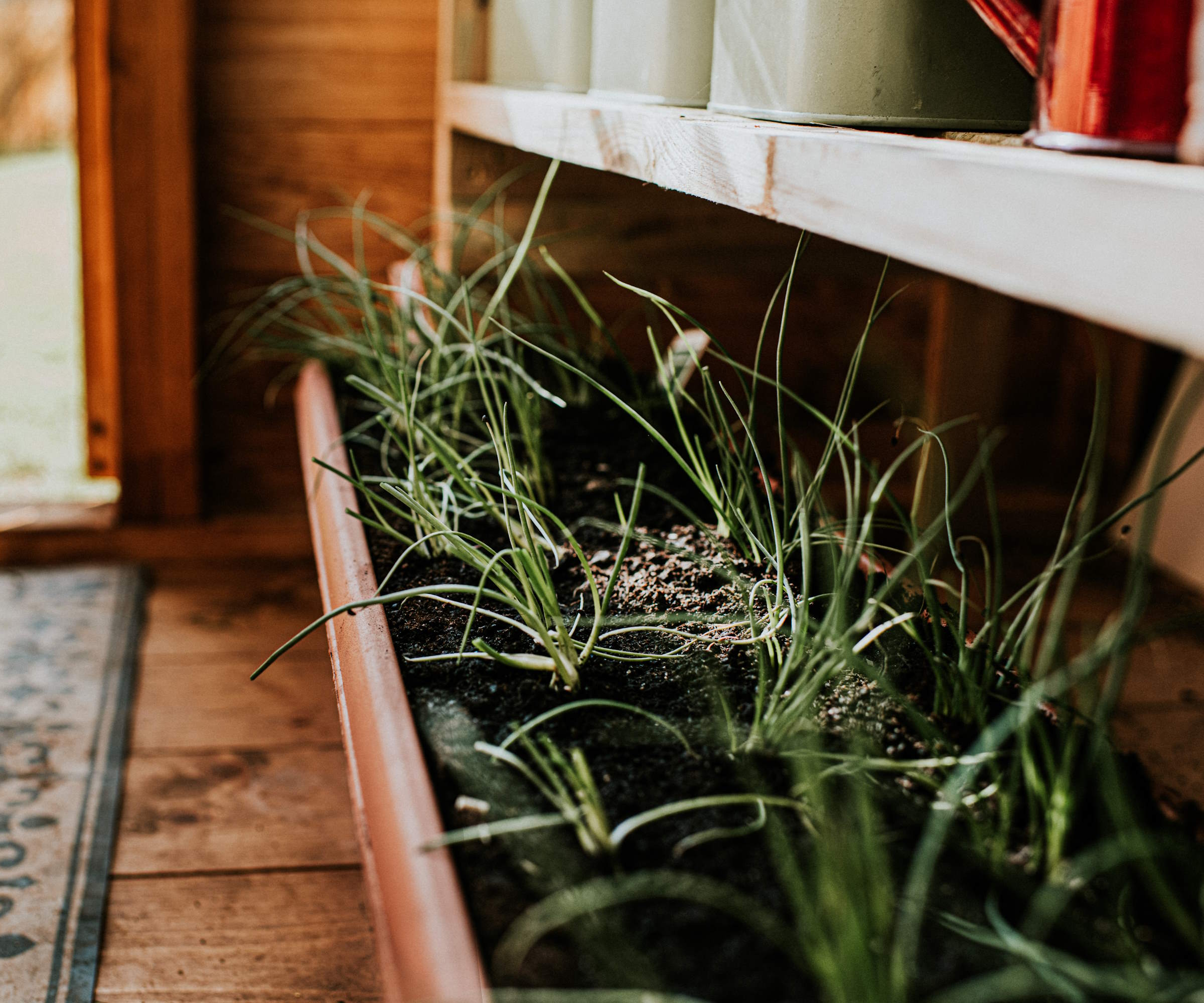
Green onions can also be grown indoors either to harvest as full onions or just used for the green tops.
There are a couple of green onion varieties that grow well indoors, some of them include ‘Evergreen Bunching’ and ‘White Lisbon.’ One of the most popular techniques to sow green onions is planting seeds 1/4 inch deep and one inch apart in small pots to ensure each plant has sufficient space to grow.
Light conditions: Green onions need sunlight to grow and will benefit from at least 6-8 hours of exposure to sun or artificial source of light. There are a number of artificial light sources on the market, however we like the GooingTop LED grow light from Amazon.
Watering: Green onion plants need to be watered well but not overwatered as this is likely to lead to the development of mold. Green onions prefer soil more on the moist side.
Harvesting: Green onions begin to produce a harvest when the plant’s green tops have grown to six inches high. Trim the green onions leaving the white part at the base so that they can grow again.
5. Cherry Tomatoes
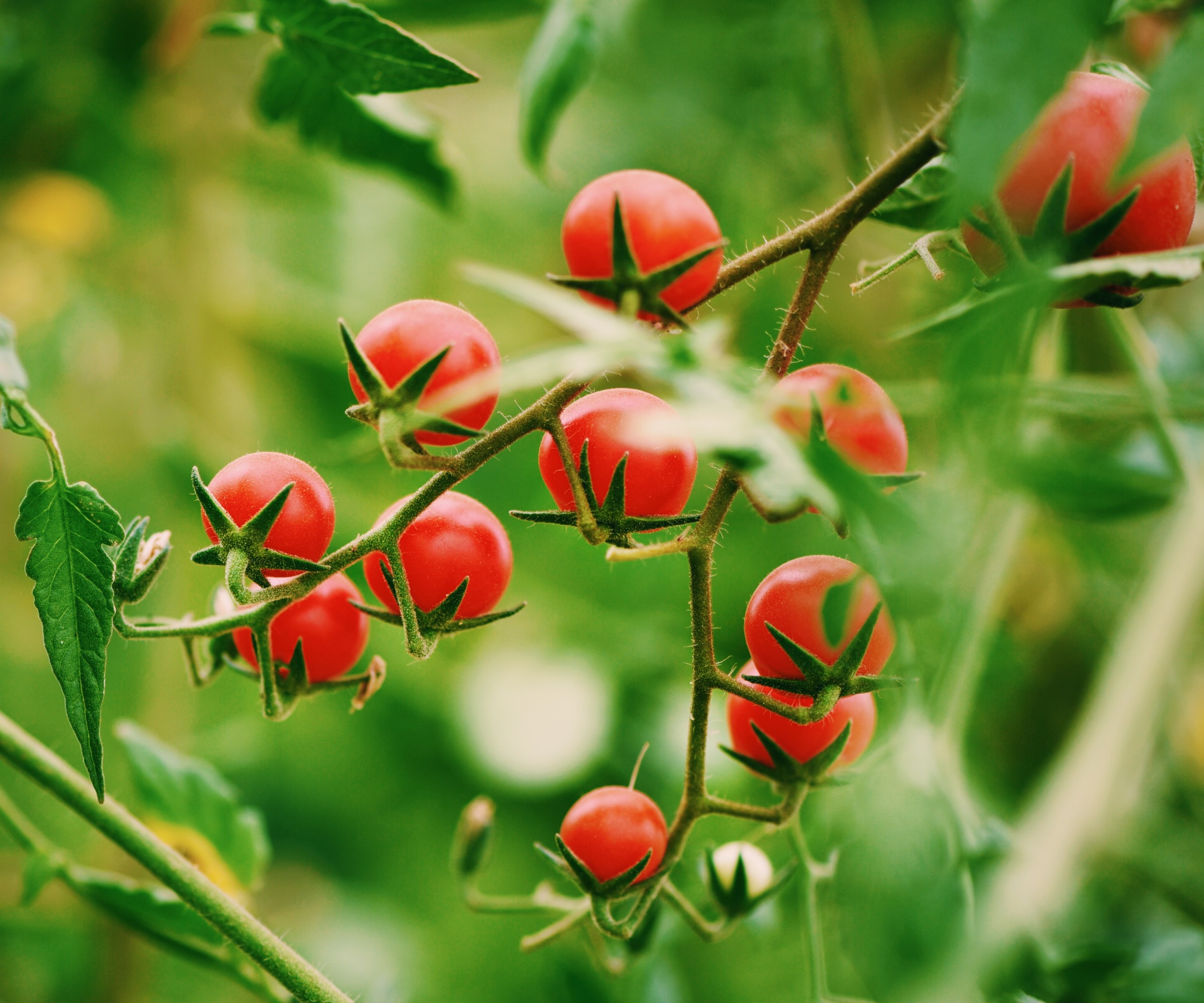
Whilst you can grow all tomatoes indoors, some varieties require more work than others. Cherry tomatoes are one particular variety that is relatively easy to grow indoors. To get started, plant cherry tomato seeds in a pots or seed trays and ensure good drainage.
Tomatoes grown indoors will not be automatically pollinated as outdoor crops would be, so you may have to hand pollinate your tomatoes to ensure fruits. There are lots of useful tips in our guide to hand pollinating plants. It's simple to do using a soft toothbrush, paint brush, or cotton swab and gently brushing the pollen from one flower to another.
You could also place your plants next to an open window, and the natural breeze might be enough to do the work for you.
Light requirements: Tomatoes require a lot of sunlight, typically 12-16 hours of sunlight is needed every day for optimum growing conditions. During the summer months, place your growing cherry tomato plants needs a southern-facing window to maximize sunlight exposure. If you are growing during the fall or winter then you may need to supplement the lack of sunlight with grow lights.
Feeding: As well as light, tomatoes require feeding. To help with feeding, you can add time-released fertilizers, such as these from Amazon to the plants. If you notice your cherry tomato plants are growing slowly then switch to a fertilizer with a higher phosphorous content.
6. Celery
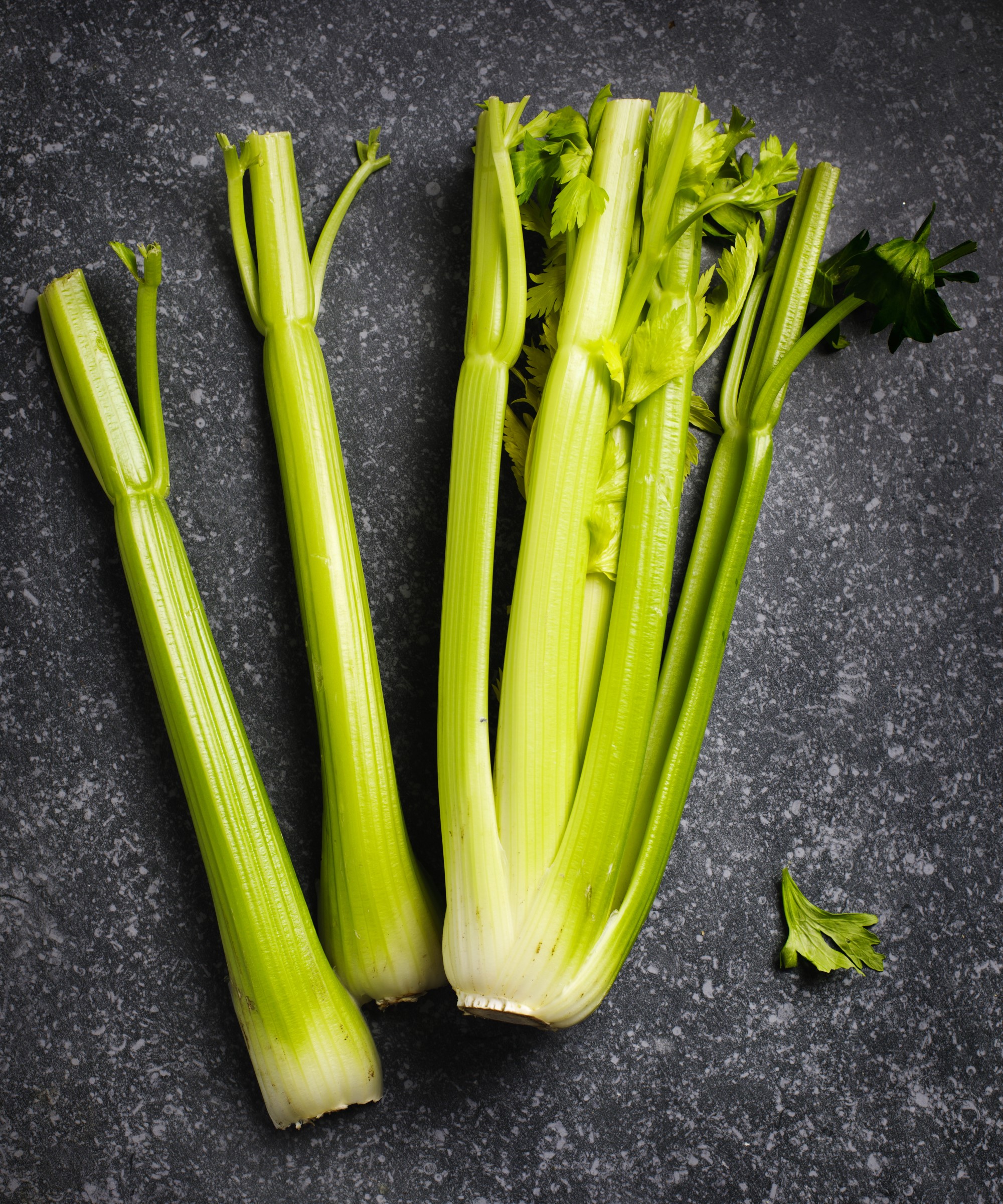
For those who enjoy using celery leaves, you can successfully grow these indoors by taking the root section from store-bought celery stalks and dipping them in an inch of water before transferring to soil.
These plants will not grow into tall, thick celery shoots, but they will still produce small, tender stalks topped with leaves that can be harvested and used, as they are still perfectly edible.
While celery won’t last forever, you’ll get several harvests from each rooted section. Rooting a new section each time you buy a new head of celery will keep a steady supply.
FAQs
Can you grow fruit crops indoors?
In short, yes there is a number of fruit species that can be grown indoors. The 'Meyer Lemon' is an especially popular option for those who enjoy growing citrus inside, however, they do require high levels of humidity.
If you're keen to give indoor veg growing a go, but are concerned about having a lot of soil inside - which has the potential to get messy, you can learn more about how hydroponic gardening systems and how to grow plants in water.







